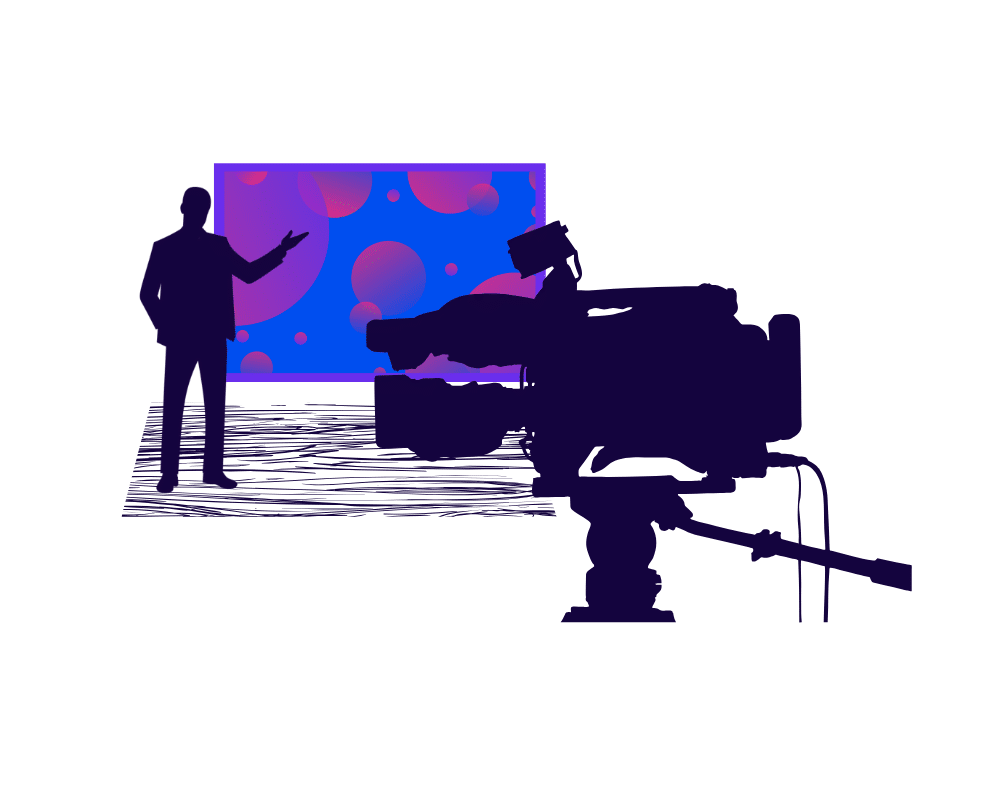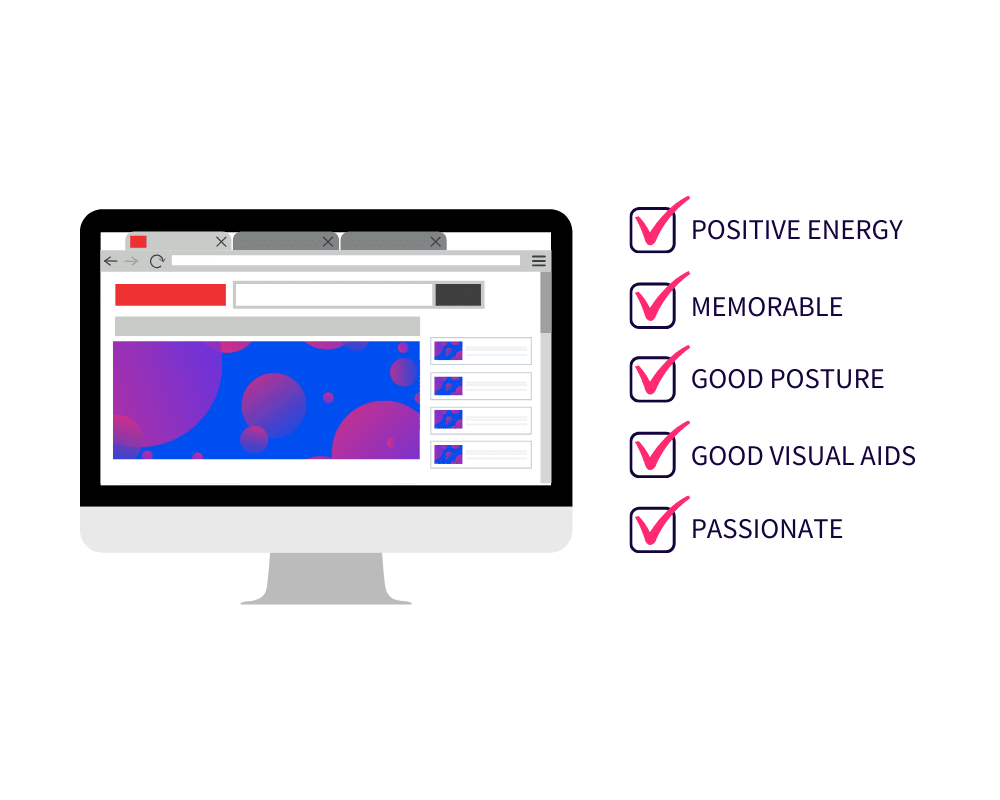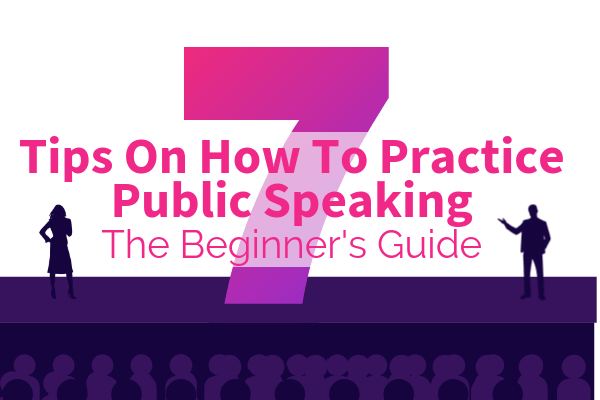There are tons of avenues into the public speaking industry. From lawyers to teachers to high school dropouts, every public speaker shares one thing: passion for their message and their story. Because of this, the so-called “credentials” for speaking are fairly loose. In fact, besides telling the truth about who you are and where you came from, the path to success varies greatly. This means that no matter what you’re passionate about, personally, if you’re looking to reach a wider audience, you definitely can. You also definitely should! The more voices we can share the better.
But, before that passion can take you to the stage, there are a few best practices to follow. Most of our blogs here at SpeakerFlow stress that if you want public speaking to be your primary source of income, you have to start your own speaking business. We also tend to focus on the “business” part of “speaking business”. In other words, we’re big on how to master sales, marketing, and operations, so your speaking business is a well-oiled machine.
However, for this blog, we’re going back to the baseline of public speaking: the speaking! Here, we’ll cover seven of our most-cited tips and tricks for exemplary public speaking. We’ll also break down a few related FAQs, so you can start commanding stages near you sooner rather than later.
- 1. Refine your focus industry and learn as much as you can about it.
- 2. Maximize your presentation tools.
- 3. Record yourself speaking, so you can review yourself.
- 4. Practice your presentation in front of friends or family.
- 5. Get advice from established speakers.
- 6. Review videos of speakers you admire and mimic their style.
- 7. Stay true to yourself and your brand.
- Other Frequently Asked Questions
1. Refine your focus industry and learn as much as you can about it.

First, before you can jump into crafting a speech, the most important step is choosing your audience. Ask yourself, “Who do I want to help the most?” and “Who could benefit the most from what I have to say?” Although this may apply to a number of industries, it is key that you choose only a few on which to focus.
To put it simply, trying to focus on ten different industries at once is like multitasking. Although that sounds doable, according to scientists around the world, multitasking isn’t actually possible. Take it from Dr. Earl Miller at the Massachusetts Institute of Technology (MIT). In Miller’s words, “You’re not paying attention to one or two things simultaneously, but switching between them very rapidly.” The same is true when choosing an audience for your speaking business. Trying to appeal to many diverse audiences dilutes your focus and your message, ultimately defeating the purpose.
To choose your focus industry, consider two things right off the bat: your experience and your passion. Do you have experience as a teacher or in schools? Becoming a public speaker in schools would be a great place to start (i.e. focus on the education industry). Are you passionate about the decreasing percentage of blue-collar jobs in the United States? Look for public speaking opportunities in industrial industries, such as manufacturing or welding. You might have heard the saying, “niches lead to riches,” and it’s true. The more focused you are, the more easily you’ll be able to learn about the problems in your industry and the ways you can help solve them. From there, the more you can tailor your message to your audience, making your impact all the greater.
2. Maximize your presentation tools.

That brings me to the second piece of the public speaking puzzle: your presentation tools. For many beginners in the speaking industry, getting up on stage can seem daunting. This is especially true if your past job experience hasn’t included a lot of speaking experience. Additionally, the barrage of tasks that come with managing a speaking business can make the actual task of speaking seem more stressful than it needs to be.
An easy way to make that easier is through your media. Besides adding depth, visual aids are great for tracking your progress throughout your presentation. Take my wife, for example. A natural introvert, Cece’s at home creating illustrations and graphics like the one on the left. So, when she does have to get in front of people, she can have trouble managing her nerves. To combat this, her go-to move is a slide deck with presentation notes. That way, even if she gets anxious enough to lose her train of thought, she has a slide show with images and a written outline to keep her on track.
On top of beating the fear factor, adding presentation tools to your public speaking plan is also useful for branding. By keeping your colors, fonts, and general style in front of your audience, you help them better remember you and your message. You also add to the experience as a whole, appealing to another one of their senses. In other words, they can hear you, they can feel the chair beneath them, but what will really stick is what they see. Make them see why you are exceptional, through your visual aids, and they will remember your message, too. I guarantee it.
3. Record yourself speaking, so you can review yourself.

After choosing a niche and crafting a presentation, the next step is practice. We’ve all heard the phrase “practice makes perfect” and public speaking is no exception. The more time you can spend iterating, the more prepared you’ll feel at the event. Plus, the more you practice, the more the words will feel natural. That way, your audience will be able to see your authenticity and passion, even if you’re still a little bit shaky on stage.
One of the most effective public speaking practice techniques is video recording. Although few people like their own voice, the audience’s perspective is important. Are you gesturing with your hands too much? Is the intro too long? Should you include a story in the middle, so you hold the audience’s attention? All of these questions are important to answer, and it can be easiest to do so by seeing yourself. Looking back at my wife, for example, she has a habit of tucking her hair behind her ear when she’s nervous on stage. Although, in the audience, this is apparent immediately, she didn’t realize it until she saw herself. Now, she wears her hair up, so it’s not a distraction to her or the audience. Many problems like this can be noticed and easily fixed if you’re just able to get an outside view of them.
Besides tackling presentation taboos like this one, recording your public speaking practice is also useful because of simple biology. From an evolutionary standpoint, we are already wired to notice negativity more than positivity. This instinct can make us extremely self-critical, giving us the tools to improve, even if it kind of bums us out at first. Just be sure you’re also noting the ways you’re killing it (because you definitely are). 😊
4. Practice your presentation in front of friends or family.

If you’re not comfortable watching yourself present repeatedly or you don’t have a way to record yourself, bring in some help! Asking family or friends to be practice audience members is a sure way to hear the pros as well as needed tweaks to your speech. Additionally, in many cases, these two groups of people know you better than anyone else in your life. That means that, although you may not want to hear it, they know your bad habits better than anyone.
In addition to your bad habits, your family and friends will also be able to tell you if you don’t quite sound like yourself. Slang phrases or inside jokes may seem like an easy way to seem cool and confident on stage. However, if a phrase is clearly in contradiction to your personality, no matter how you say it, it’s still not going to feel right. More than anyone else, the people closest to you will be able to say, “I don’t know. That doesn’t sound right. Here’s what I’d expect you to say instead.” Who knows? You could have some killer speech-writers around you and not even know it!
Pro tip: Not sure if your friends or family will want to sit through your presentation a bunch of times? Make it a beer and pizza night, as a “thank you”. Maybe it’s just me and my teammates, but those are two things we rarely turn down. Just sayin’.
[hubspot type=cta portal=5815852 id=4423b6b8-d7d0-4f03-b792-184db7c3284b]
5. Get advice from established speakers.

In addition to your inner circle, some of the best public speaking advice comes from established speakers. After all, they know the pitfalls and secrets better than any newbie. Additionally, although they may not broadcast it, many of them were hesitant to get on stage initially, too. You hear that, introverts? If other public speakers can do it, you can, too! 👍
Besides in-person meetings, there are a ton of digital resources available for public speaking tips. Some are paid, such as Jane Atkinson’s Wealthy Speaker School program and Trisha Brouk’s Big Talk Academy. Others are available free, such as The Speaker Lab podcast. Depending on your budget, some of these options may be more appropriate than others. That said, the key thing to remember is to start where you are able and continue learning from there. If you don’t have the budget for paid training, ask a few speakers you admire if you can buy them a virtual coffee, and send them a $5 Starbucks gift card. As your speaking prowess grows, so will your budget. Then, you can pay for additional training, if needed.
To start small, one of our favorite sites for public speaking tips is YouTube. Within this massive world of videos, one channel we keep coming back to is the TED channel. If you haven’t heard of TED before, it stands for “technology, entertainment, and design,” and the TED Organization is a stellar source of content. From celebrities to professors, their work is truly inspiring. This includes advice for killing it on stage. Check out a few of my personal favorites below to see for yourself:
- “Speak like a leader” by Simon Lancaster
- “TED’s secret to great public speaking” by Chris Anderson
- “How to speak so that people want to listen” by Julian Treasure
6. Review videos of speakers you admire and mimic their style.

Speaking of videos, the sixth in our seven tips for practicing public speaking is watching other speakers. Think of some of the speakers that have touched you, motivated you, or inspired you. Whether it’s readily apparent or not, there was a ton of work behind that speech that you remember. Maybe it was the tone of their voice or their cadence as they spoke. Maybe it was their slide show in the background or the props they used. There are tons of variables in public speaking, and mastering each of them is what makes you truly great. Thankfully, there are tons of public speakers out there to study.
I won’t name my favorites here – your preferred public speaking style is for you to decide. However, there are a few key things to remember when choosing speakers to mimic. Before anything else, look for people that share your ideals. They don’t have to be in the same industry, but they should definitely share your approach to speaking. We’ll look at my wife one last time, for example. Cece is relatively simplistic in her personal style and utilitarian in how she dresses. Because of this, she’s unlikely to watch videos of Lady Gaga or Cher, when looking for inspiration. Remember, you’re looking for speakers like whom you aspire to be, when you’re killing it as a public speaker. That means that, although they don’t have to be identical to you, as you are now, they shouldn’t be a complete opposite either.
Besides personality and basic values, be sure to also choose someone that mirrors what you are ultimately comfortable with. If you’re uncomfortable with acting or impressions, don’t look for speakers that incorporate a lot of performing into their presentation. You should be able to look at a speaker and, as you note their mannerisms or gestures, think “I could do that!”
7. Stay true to yourself and your brand.
That said, above all, the most important part of mastering public speaking is a tried and true value: stay true to yourself! As you’re reading this, even if you don’t have an official speaking business yet, you’re here because of your passion. Whether you’re spreading a message in faculty lounges or factories, your words are important. Keep that in mind, even if you’re only at the beginning – The world needs to hear what you have to say.
Hopefully, these seven tips and tricks can help you kickstart your public speaking career! For details about the “business” side of building a speaking business, check out “How To Start A Speaking Business: The Ultimate Guide”. 👍
Other Frequently Asked Questions
Besides the seven points we’ve already covered, there are a few other questions you may be asking. For new public speakers especially, there are a few odds and ends to tackle, as you branch into the speaking industry. Below, we’ll break down three of the questions we’ve heard the most and how you can knock them out of the park.
How can I practice speaking at home?

To begin with, we’ve already broken down recording yourself speaking and speaking in front of family and friends. Clearly, both of these are excellent ways to practice public speaking at home. However, if you don’t have a recording device or a practice audience, simply reading your speech to yourself works, too! Personally, I’ve missed many grammatical errors or unnatural phrases when I typed out a presentation. But, fortunately, I was able to catch them when I read it aloud and make adjustments. It sounds simple (and it is) but it’s super effective.
How do I get over my fear of public speaking?
This question is a tricky one because there’s no right answer. From personal experience, I recommend practicing alone, practicing in front of family, and starting with small audiences, when you initially branch into the public speaking world. That way, you can begin in a comfortable environment and work up from there. For other advice, and for inspiration to overcome your fear of public speaking, check out this 2017 TED talk from Danish Dhamani. Not only is he relatable in his own fear of the stage. He also has some awesome encouragement if you’re not confident you can beat your own.
What are the 4 types of public speaking?
Overall, there are four types of public speaking: ceremonial, demonstrative, informative, and persuasive speaking. The first of these, ceremonial speaking, can be seen at special events, such as commencement speeches. Of the four types of speaking, this is the most infrequent. The second type of public speaking, demonstrative, usually educational in nature and is closely related to the third type of speaking, informative. However, where informative is about sharing an idea or information about a topic, demonstrative speaking differs in that it tends to include a visual presentation. Think of a classroom, where informative speaking can be seen in a lecture and demonstrative speaking can be seen in a laboratory experiment in front of the class. Finally, the final type of speaking, persuasive, is intended to persuade (surprise, surprise). Although it can be educational, it is used to present an argument and, theoretically, influence the audience’s point of view.






